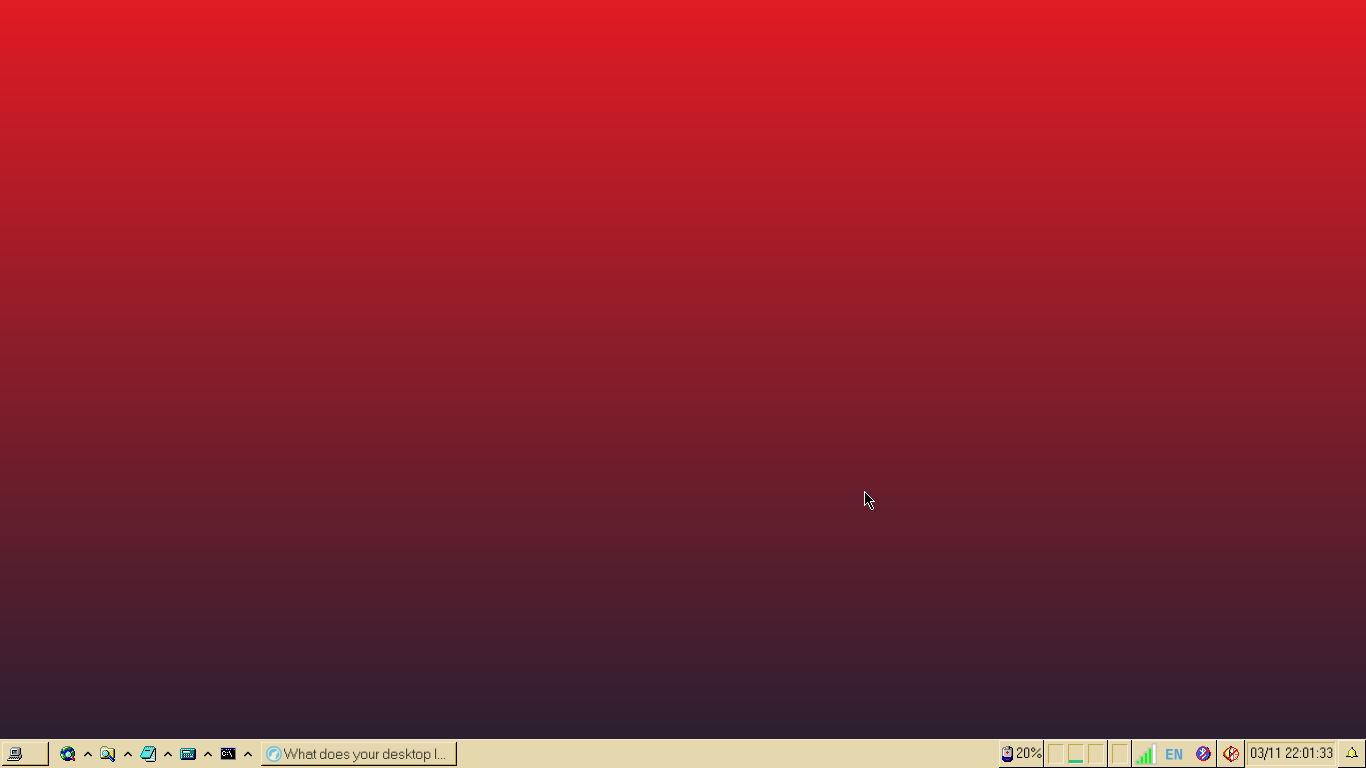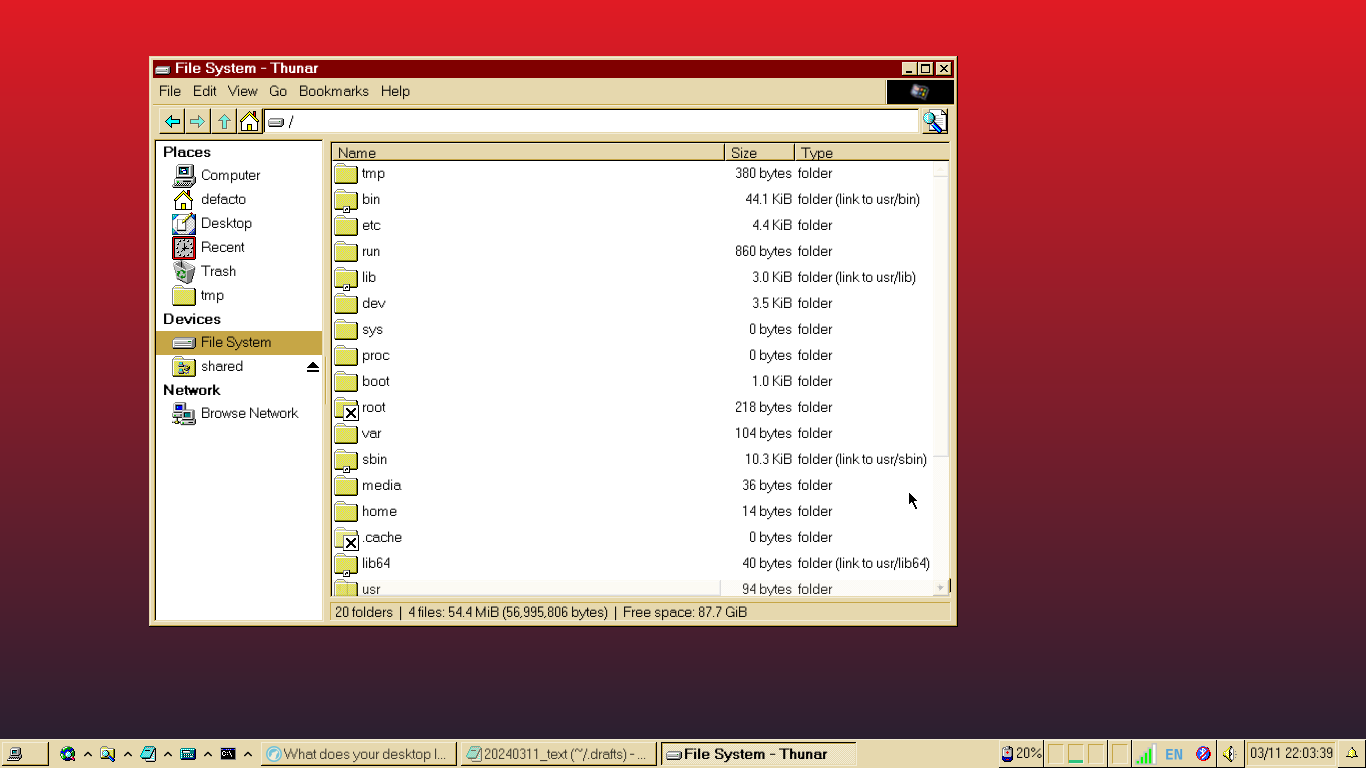If you want to avoid this judgement, get an Apple silicon Macbook Air or something…
Damn, me over here trying to flex my Chicago95-ass X201T to my classmates
If you want to avoid this judgement, get an Apple silicon Macbook Air or something…
Damn, me over here trying to flex my Chicago95-ass X201T to my classmates
Storytime!
As a physics major, daily driving Linux worked out pretty smoothly. The thing that saved me from trouble the most was making a weekly full system backup (I used Clonezilla and my file server). If anything was truly incompatible, I took care of it on the school’s computers.
In my second semester, I began dual-booting on my X201 Tablet and desktop, eventually booting into Windows infrequently enough that I made my X201T Linux-only by the end of my second year.
Around that point, I began using LUKS full-disk encryption on my machines and USB drives. I highly recommend if you don’t already, even if just for peace of mind. I have strong ideas about the way things ought to look and work, so being able to customize Linux to my heart’s content (with Chicago95 ofc) made doing work on my computer a bit more enjoyable.
Documents
Lab
Social
Tools
Graphics
As for the desktop, I had purchased it with gaming in mind, but it eventually became my SMB file share, media server, and RDP session host so I could make any library desktop like my own. Each thing in its own VM, of course. By the end of it, I was one of about 3 students running a server over the campus LAN. Even in the comp sci department, surprisingly few students used Linux.
Linux also met all of my computing needs while studying abroad in Germany. For five whole months, I had not used Windows once. Though my SSD did give out on me once, a backup saved the day.
A friend once did need to use a rather invasive remote proctoring tool. Highly recommend a separate laptop or at least a fresh SSD for this case.
Mobile privacy, if it’s relevant
Overall, it was smooth sailing using Linux throughout my college years and no incompatibilities that couldn’t be solved in the library or a computer lab.
edit: i used debian btw
Middle mouse click is indispensable but it seems to be first to fail on my mice


Wayland, but I’m patiently waiting for xfce to support it


yt-dlp. Too many options to remember and look up every time, but all useful and missing from GUIs when you just want to dowload audio or ‘good enough’ quality video in batches without re-encoding.
While nmtui is perfectly fine for the CLI-uninitiated, I sometimes wonder why the nm-connection-editor window doesn’t provide the same level of functionality.
A metal 128 GB USB on my keychain next to the U2F key
16 GB Ventoy partition with:
And a LUKS encrypted partition in the remaining space with more documents and a backup of almost all of my photos.
To make it clear, I would still use Linux with GNOME/libadwaita over Windows any day. Yes, some themes are ridiculous and will be a nightmare for any developer to work around. That said, I can’t help but be concerned about the coming demise of theming with the way GTK is going.
What first pushed me to start exploring Linux was when Windows 8 forced the Metro theme down our throats. My time with Linux would have started three years later if M$ had kept Windows 7 theming options - that’s how important a customizable, sensible theme is to me.
I’m glad that I don’t have to do that again since there are DE options that do insist on keeping theming alive.
First experimented when Windows 8 took away Aero Glass and other customizations. Committed when I had to fight with Windows 10’s twice-yearly feature updates that messed with my settings and wasted space with new programs I didn’t ask for. I now keep a separate laptop just to run Windows when I have to.
Distrohopping was mostly confined to my first year using Linux. Deepin (kept crashing) -> UbuntuDDE (went unmaintained) -> Arch Linux -> Debian. Settled on Debian Stable since it just works, I haven’t been using bleeding-edge hardware, and I don’t like things changing around too often (see my Chicago95 rice).


Room phone: A clear 90’s phone
Cell Phone: Some sort of non-folding T9 phone, it wasn’t a Nokia though
Smartphone: Knockoff iPhone 6
Computer: Pentium III desktop with 256 MB RAM, 30 GB HDD, Windows Me. It was also the family computer. Later upgraded to 1GB RAM and Windows 2000
Computer (my own): 10.6" notebook with a 1 GHz Celeron, 512 MB RAM, 60 GB HDD, and Windows XP (later upgraded to 2GB RAM)
I also had a netbook with an Atom Z3735F and 2GB RAM, albeit an Ideapad 100s. The 32 bit versions of Debian Stable 11 and 12 worked out of the box for me.
If you are at the terminal, try running apt install grub-efi-ia32-bin before installing grub.


More or less replicated the desktop layout I had used throughout childhood, sans desktop icons
Windows 10. When your OS no longer respects your choices and you have to fight it every minute, there is something wrong. The creeping invasions on privacy have only cemented my use of Linux
Truthfully, I’m not sure if I would have ever switched over if Microsoft kept the Windows 7 paradigm. But I started my search for alternatives when Windows 8 - already too adventurous for me - came with the computer I bought.
Towards the end of my time using Windows 10 as my primary OS, the realization that the UI is not an inherent component of the OS sealed the deal. As a Windows 2000 fan, I fell in love with the way Chicago95 Debian replicated the look and stability that I had sorely missed.
IMF: Imperialist Monetary Fund